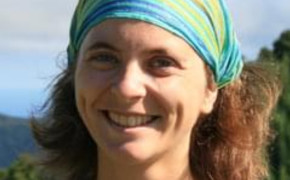Located in the city of Zaragoza, "La Calle Indiscreta" offers environmental education activities related to daily urban life.
The urban environmental facility "La Calle Indiscreta" is owned by the Aragon Government and offers environmental education activities related to daily urban life.
The goals of the practice are:
-Increased knowledge about complex urban ecosystems.
-Emphasize the role of citizens in urban environment
-Publicise the positive values of urban centres.
-Give value to urban space as a place for learning and assimilating positive behaviours towards the environment.
The activities take place in an exhibition space, recreating streets, where people can discover and experience environmental problems related to urban life. You can find, for instance, a hospital, a real estate agency, a house, a supermarket, a park, recycling containers, each of them offering information regarding the city of Aragon and sustainability. The facility is completed with a classroom to hold other activities and workshops.
All activities are free of charge and open to visitors of all ages. Environmental educators carry out the activities, which combine the visit to the “streets” with workshops on issues such as waste, water, health, or energy, which can be adapted to the different audiences. Moreover, the public can access interactive places, such as a toy store where they can learn how to reduce emitted CO2 emissions, a supermarket that teaches how to make responsible shopping or a health centre that shows how environmental problems also affect the people.
Resources needed
Three environmental educators and one administrative (part-time), with annual costs of 78,000€. Furthermore, another personnel carries out games and other activities with a staff cost of 12,000€ per year. The costs of materials and supplies are annually 15,000€.
Evidence of success
The feedback has been positive, visitors and participants are increasing year by year in the activities of the practice. During 2020, 131 group activities were carried out attended by 2,473 participants. Furthermore, 815 people have attended individually apart from the group activities. These numbers are expected to increase in 2021.
Difficulties encountered
The content is updated regularly, with new designs, activities and workshops, so that the public can revisit to find new learnings.
During COVID-19, they have published through social media small demonstration videos, thus solving the issue of citizens not being able to access the facility.
Potential for learning or transfer
Most of the attendees are eager students, the adult audience is also willing to learn new ways to improve the environment through their daily actions. The practice raises awareness of the sustainability challenges of urban living, making people reflect on the environmental impacts of consumption and production in cities. The practice can be oriented to a diverse public including students of different levels, adults, associations etc. The idea can be easily transferred to other cities.
The urban environmental facility idea and the contents can be reproduced and adapted to other contexts, regions and/or types of entities, reflecting on citizens challenges related to daily life. In order to transfer this practice, it requires having a physical space where organizing the workshops and the exhibitions. At least one environmental educator and one administrative person are required to manage it.
Please login to see the expert opinion of this good practice.
Tags: Circular economy, Citizens








